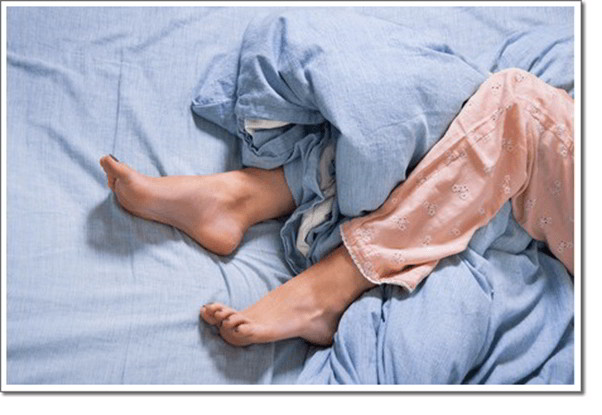Ekbom syndrom causes a burning sensation in the legs and feet that may be alleviated by transferring them, sometimes always. We still have a lot to learn relating to this distressing state but around 5 percent of the public can expect to experience some or all the symptoms during their lives.
What Causes It?
Primarily related to aged girls, restless legs may also change men and kids and there’s evidence to indicate that it runs in families. The first symptoms may happen slightly or infrequently in the teen years, happen again in pregnancy to fade away after the
Some studies have indicated an association with anxiety, depression and stress. It’s understood that about one third of all patients with rheumatoid arthritis also suffer from this illness.
What Are The Symptoms?
Disagreeable creeping, prickling or burning sensations in one or both calves that can occasionally be felt in the feet, thighs, torso and arms. The senses can start shortly after sitting or lying down but generally come on in the evening and at night time, causing serious disruptions to sleep.
Although symptoms can fluctuate broadly, the one consistent factor is that short lived alleviation can be reached by motion.
If you, or someone you know, suffers often from this sort of distressing suffering, it’s important to consult your physician so a diagnosis can be made. Other illnesses – for example, iron deficiency anaemia, circulatory or disk issues – can give rise to similar symptoms.
A similar debilitating state, common in the elderly, is meralgia paraesthetica, or pain in the outer leer. Unlike restless legs, it is easily treated by conservative treatment in order to see the value of an exact analysis.
What Can I Do?
As yet there’s absolutely no remedy for restless legs, but some sufferers have seen regular mild exercise, swimming, cool showers, yoga and relaxation exercises and vitamin B12 helpful.
It’s wise to avoid standing or sitting for long intervals, catnaps during the day, heavy meals before bedtime, java, restrictive garments and clothes made from artificial fabrics.
Treatment with specific drugs has proved successful, in particular ropinirole. No clinical trials have been carried out on ropinirole as a treatment for restless legs (although trials are about to begin shortly) but there’s substantial anecdotal evidence suggesting that it’s brought relief to many sufferers. It was developed to restrain leg tremor in individuals with Parkinson‘s disease and it’s been found to have a broader use.
As it isn’t licensed as a treatment for restless legs, a physician may have to prescribe it
Independently on a “called patient” basis. This is where a physician notifies the health authorities that he’s administering an unlicensed drug to his patient and that you both take responsibility for the determination.
The support group for sufferers (see Useful addresses p.567) can supply a wealth of tips and practical guidance on treatments that other folks have found successful. Through its quarterly newsletters it discusses advice about current medical research and investigations.


 (55 votes, average: 4.58 out of 5)
(55 votes, average: 4.58 out of 5)